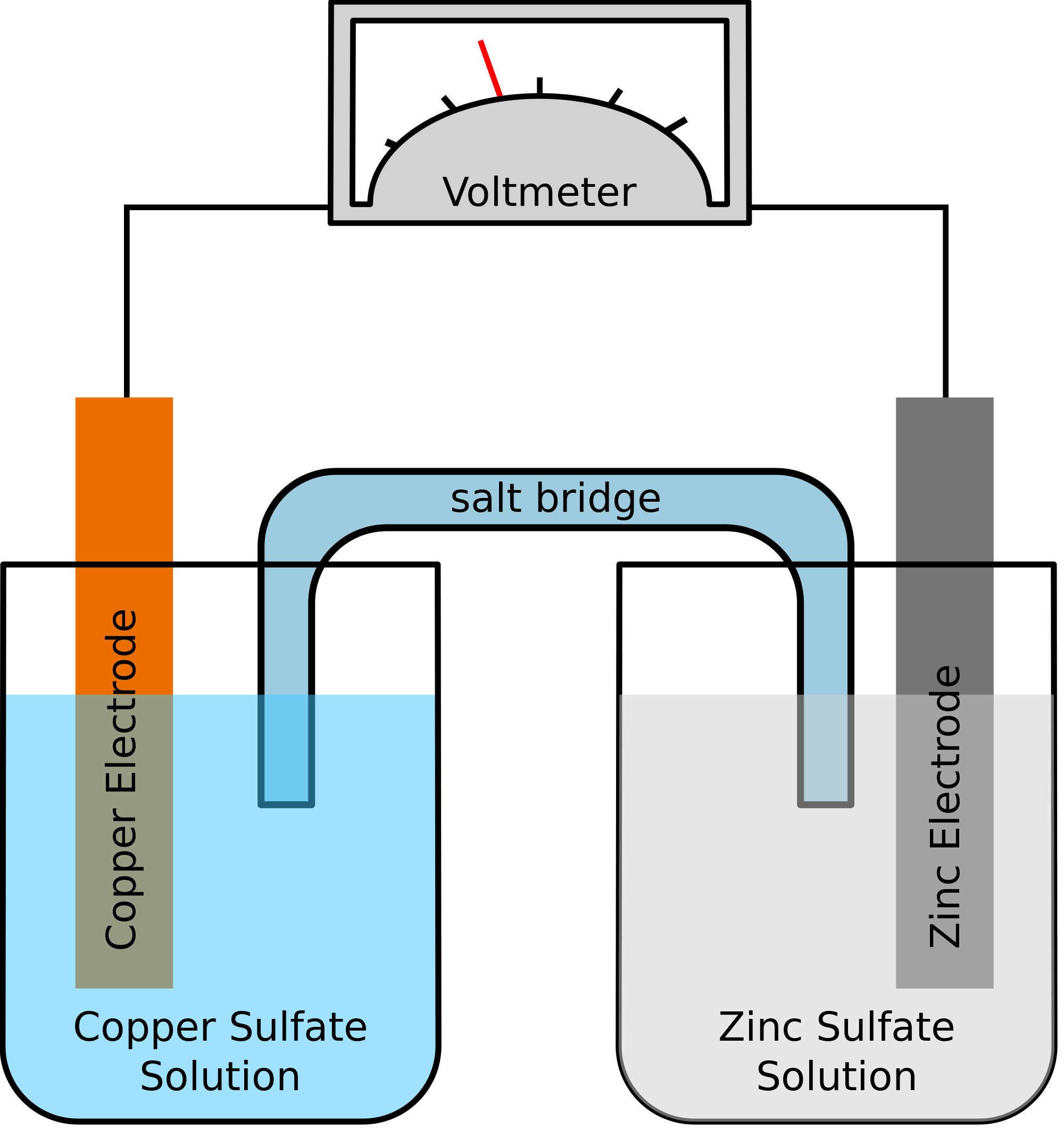The use and importance of cells and batteries are unquestionable. In our day to day, lives, we make use of cells in so many different ways. Now, in the past few concepts, we have already introduced you to batteries in general. However, here we’ll give you an in-depth analysis of galvanic cells. So, let’s get started.
Suggested Videos
Galvanic Cells
Among other cells, a galvanic cell is a type of electrochemical cell. It is used to supply electric current by making the transfer of electrons through a redox reaction. A galvanic cell is an exemplary idea of how energy can be harnessed using simple reactions between a few given elements. It is amazing to study how a galvanic cell can be set up and utilized to obtain energy.
Explaining in the most simple terms, a galvanic cell acts as a device in which simultaneous oxidation and reduction reactions take place. These reactions are used to convert the chemical energy into electrical energy, which can be utilized for any commercial purposes.
Browse more Topics under Electrochemistry
- Batteries
- Conductance of Electrolytic Solutions
- Corrosion
- Electrochemical Cells
- Electrolytic Cells and Electrolysis
- Fuel Cells
- Nernst Equation
- Variation of Conductivity and Molar Conductivity with Concentration
Working of Galvanic Cells

The working of a galvanic cell is quite simple. It involves a chemical reaction that makes the electric energy available as the end result. During a redox reaction, a galvanic cell utilizes the energy transfer between electrons to convert chemical energy into electric energy.
Galvanic cell utilizes the ability to separate the flow of electrons in the process of oxidization and reduction, causing a half reaction and connecting each with a wire so that a path can be formed for the flow of electrons through such wire. This flow of electrons is essentially called a current. Such current can be made to flow through a wire to complete a circuit and obtain its output in any device such as a television or a watch.
A galvanic cell can be made out of any two metals. These two metals can form the anode and the cathode if left in contact with each other. This combination allows the galvanic corrosion of that metal which is more anodic. A connecting circuit shall be required to allow this corrosion to take place.
Setup of a Galvanic Cell
In order to create a galvanic cell, one would have to go through the following setup. The cell would ideally include two electrodes. One of these electrodes, the cathode, shall be a positively charged electrode while the other, shall be the anode, the negatively charged electrode.
These two electrodes shall form the two essential components of the galvanic cell. The chemical reaction related to reduction shall take place at the cathode while the oxidation half-reaction shall take place at the anode. As has already been said, any two metals can be used to create the chemical reaction.
Understanding the Galvanic Cell with an Example
Let us take an example where the two metals involved in the chemical reaction are zinc and copper. As the chemical reaction takes place, Zinc would end up losing two electrons. This will be taken up by copper to become elemental copper. Since these two metals will be placed in two separate containers and would be connected by a conducting wire, an electric current would be formed, which would transfer all electrons from one metal to another.
At the same time, the two metals shall be immersed in a salt solution, say, Zinc sulphate and Copper sulphate in this case. In this case, the two solutions are not mixed together directly but can be joined using a bridge or a medium. This medium shall be responsible for the transfer of ions but also make sure that the two solutions do not come to mix with each other.

Such bridge helps in completing the circuit for carrying the electric charge and also makes sure that the solutions in the containers with the metals remain neutral and do not mix with each other. As long as the salt bridge does not interfere with the redox reaction, under which oxidization and reduction are taking place, it does not matter which salt bridge is being used in the chemical reaction.
Some Important Terms
Some of the important terms brought into use in a galvanic cells are listed below:
- Phase boundaries: It refers to the two metals which act as cathode and anode.
- Salt bridge: The connecting bridge or medium that allows a redox reaction to take place.
- Oxidation and reduction: The chemical processes that allow the electric current to form and flow through a galvanic cell.
Solved Examples for You
Question: In a galvanic cell, what would happen if no salt bridge is used while the redox reaction takes place?
Solution: In the absence of a salt bridge within each container containing the metals, the redox reaction would begin in much the same way. But in the absence of the salt bridge, the same would come to an end rather abruptly. The respective solutions will not be able to maintain their electric neutrality. Other than this, there will be no change in the chemical reaction or any alteration of any type because of the absence of the salt bridge or medium.






nice information. Can you please write the updated date and the author’s name for citation?